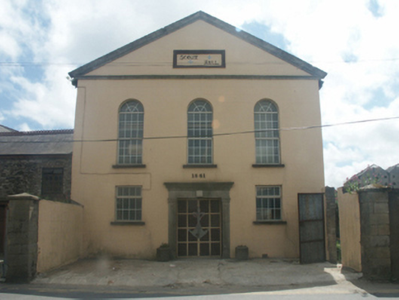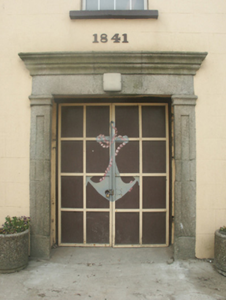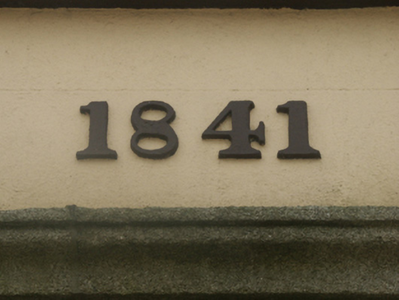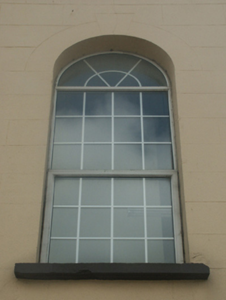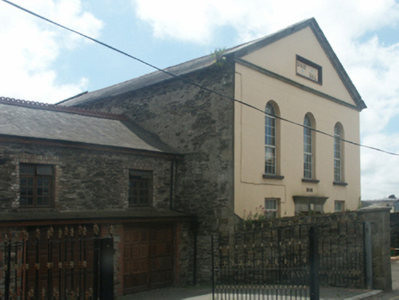Survey Data
Reg No
15605081
Rating
Regional
Categories of Special Interest
Architectural, Historical, Scientific, Social
Original Use
Church/chapel
Date
1840 - 1845
Coordinates
271798, 127298
Date Recorded
21/06/2005
Date Updated
--/--/--
Description
Detached three-bay (two-bay deep) double-height pedimented Methodist church, built 1840; dated 1841, on a rectangular plan. In use, 1901; 1911. Sold, 1937. Renovated, ----, to accommodate continued alternative use. Pitched (gable-fronted) slate roof with clay ridge tiles, cut-granite coping to gables, and cast-iron rainwater goods on cut-granite eaves retaining cast-iron downpipes. Rendered, ruled and lined wall to entrance (north) front with ogee-detailed cut-granite pediment framing blind panel; lime rendered coursed rubble stone walls (remainder) with concealed cut- or rough cut granite flush quoins to corners. Square-headed central door opening below embossed date stone ("1841") with concrete threshold, and cut-granite doorcase with panelled pilasters supporting ogee-detailed cornice on blind frieze framing replacement double doors. Square-headed flanking window openings with cut-granite sills, and concealed dressings framing replacement uPVC casement windows. Round-headed window openings (first floor) with cut-granite sills, and concealed dressings framing replacement uPVC casement windows. Set back from line of lane with benchmark-inscribed granite ashlar piers to perimeter having cut-granite shallow pyramidal capping.
Appraisal
A church representing an important component of the mid nineteenth-century built heritage of New Ross with the architectural value of the composition, one recalling the contemporary Kilkenny Methodist Church (1838) in neighbouring County Kilkenny (see 12001125), confirmed by such attributes as the compact rectilinear plan form; the symmetrical façade centred on a Classically-detailed doorcase demonstrating good quality workmanship in a silver-grey granite; and the pedimented roofline: meanwhile, a benchmark remains of additional interest for the connections with cartography and the preparation of maps by the Ordnance Survey (established 1824). NOTE: The church replaced an earlier Primitive Methodist meeting house (1795) in nearby Robert Street which was subsequently sold (1879) and adapted as the Legion of Mary Hall (Minutes of Conference 1879, 60).

